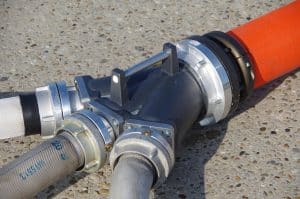Motorsports Technology Inspires Everyday Automotive Advances
Motorsports technology is constantly evolving and pushing the boundaries of what is possible in the automotive industry. From high-performance engines to aerodynamic designs, the world of motorsports has inspired countless advancements in everyday vehicles. As car enthusiasts and engineers alike continue to draw from the innovations of the racing world, it is clear that motorsports technology plays a crucial role in shaping the future of the automotive industry.
The Evolution of Motorsports Technology
From Horsepower to Hybrid Power
In the early days of motorsports, the focus was on raw power. Engines were large and inefficient, producing immense amounts of horsepower but also consuming copious amounts of fuel. However, as the demand for more sustainable and environmentally friendly vehicles arose, hybrid technology began to make its way into the world of motorsports.
One of the most notable examples of this is the Formula One World Championship, where teams are required to use hybrid power units consisting of a V6 turbocharged engine and energy recovery systems. This not only allows for more efficient and eco-friendly racing, but also serves as a testing ground for hybrid technology that can eventually make its way into everyday cars.
Aerodynamics and Performance
In the world of motorsports, every second counts. That’s why engineers and designers are constantly pushing the limits of aerodynamics to achieve maximum performance. From wind tunnels to computer simulations, motorsports technology has played a crucial role in understanding and mastering the intricacies of airflow and downforce.
These advancements have translated into everyday vehicles as well. Today, most modern cars are designed with aerodynamics in mind, with sleek and streamlined shapes to reduce drag and improve fuel efficiency. This not only improves the driving experience, but also contributes to reducing carbon emissions.
Innovations in Safety
The Birth of SAFER Barriers
Safety has always been a top concern in motorsports, and technological advancements continue to improve it. One of the most significant developments in recent years is the creation of Steel And Foam Energy Reduction (SAFER) barriers, which are used on oval tracks to reduce the impact in case of a crash.
These barriers, made up of steel tubes and foam pads, absorb the energy from the impact and reduce the force on the driver. This technology has not only saved countless lives in the world of racing, but has also trickled down to everyday cars, with many manufacturers incorporating similar energy-absorbing materials in their vehicles.
Crash Avoidance Systems
In addition to improving safety in the event of a crash, motorsports technology is also playing a vital role in avoiding accidents altogether. Technologies such as collision warning systems, adaptive cruise control, and lane departure warning systems were first developed for racing cars. Today, they are becoming commonplace in modern cars, helping to prevent accidents and keep drivers safe on the road.
The Future of Motorsports Technology
Electric and Autonomous Racing
The future of motorsports is being shaped by two emerging technologies – electric and autonomous vehicles. As electric cars gain popularity, we are already seeing races dedicated to showcasing their capabilities, such as the Formula E championship. These events not only promote the use of sustainable energy in racing, but also serve as a platform for developing new technologies for everyday electric cars.
Moreover, as the world moves towards autonomous vehicles, we can expect to see fully autonomous racing series in the near future. These races will serve as a testing ground for the latest self-driving technology, which can then be applied to commercial vehicles for safer and more efficient transportation.
Conclusion
The impact of motorsports technology on the automotive industry is undeniable. From improved performance and safety to driving advancements in sustainability and autonomy, the influence of motorsports can be seen in everyday vehicles all around the world. As technology continues to evolve, we can expect to see even more innovations and breakthroughs in the racing world that will shape the future of the automotive industry for years to come.










